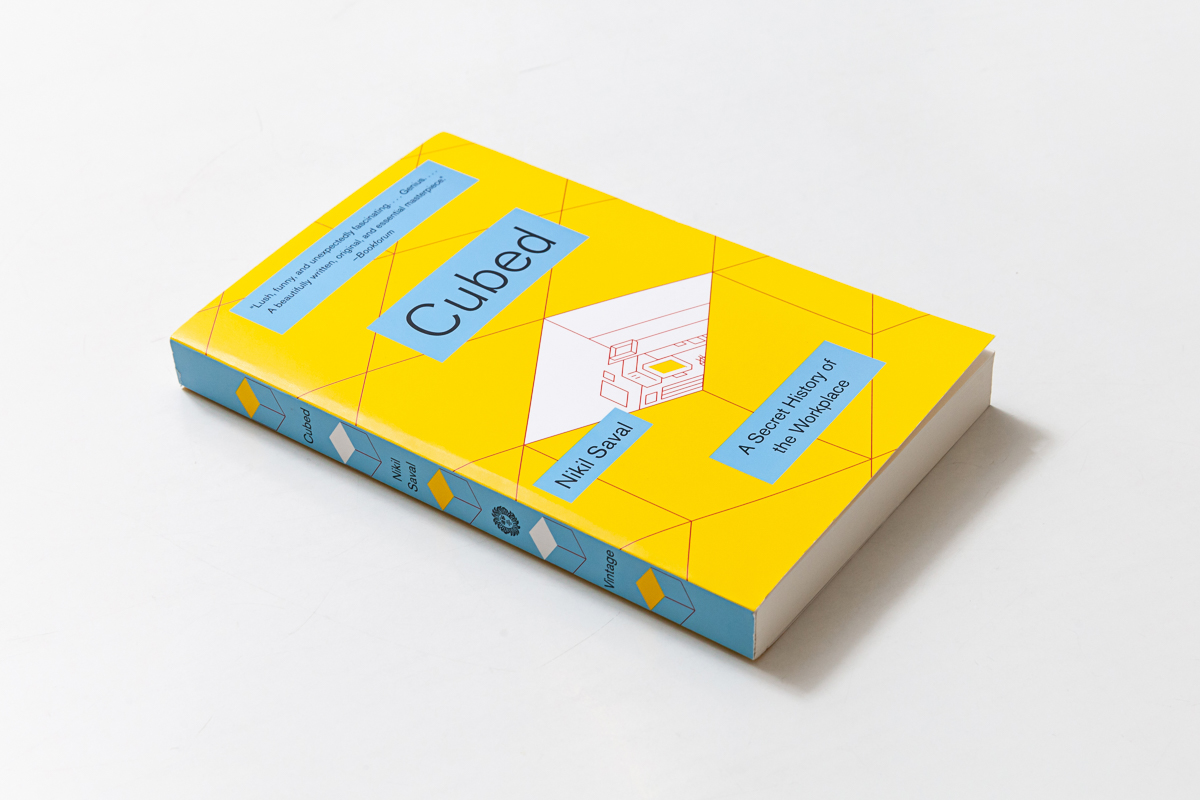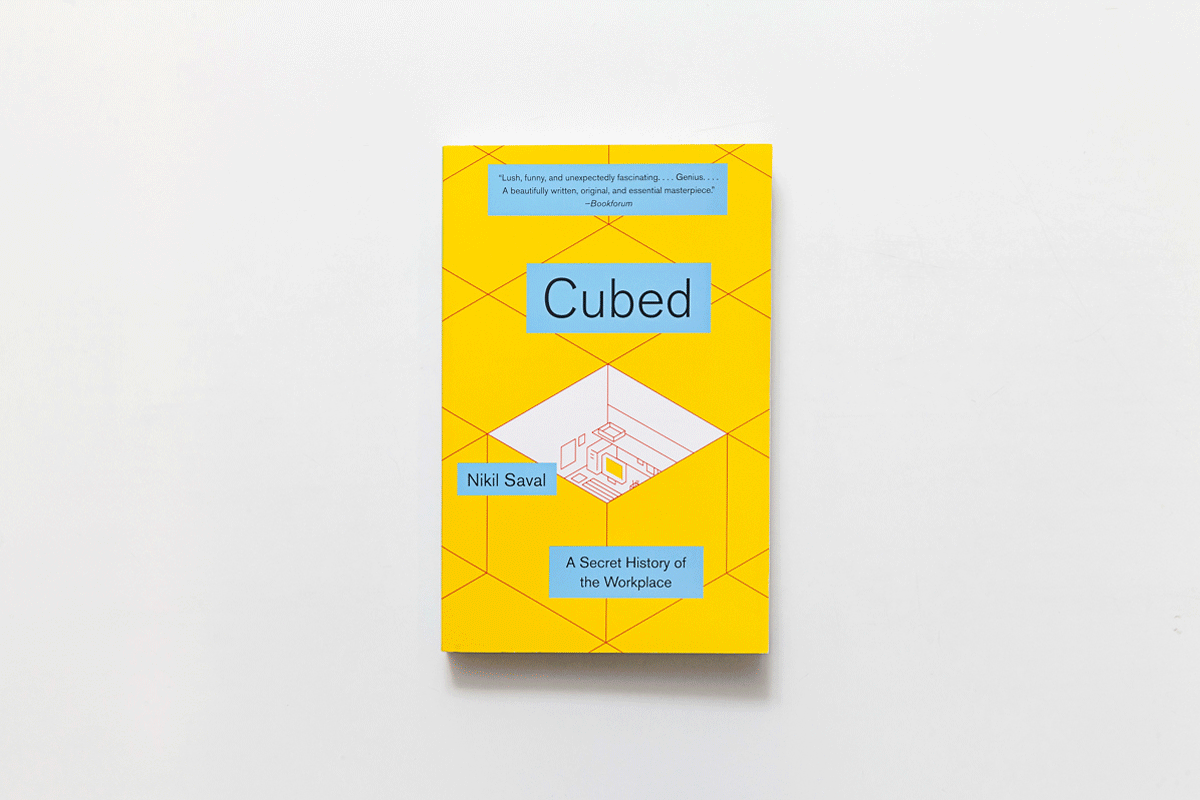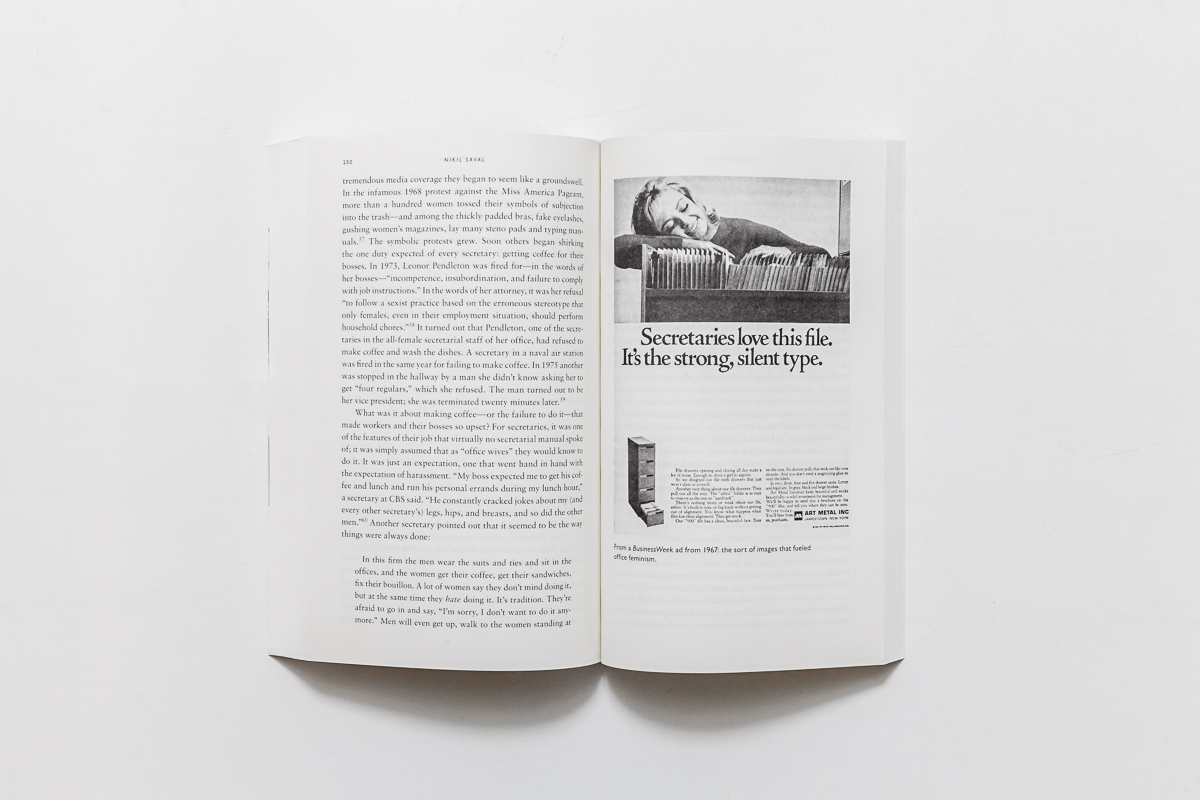It is not an easy task to depict the considerably long history of offices and predict the possible trends in the same book, in a rather short and still comprehensible length

What makes Cubed: A Secret History of the Workplace by n+1’s co-editor Nikil Saval an interesting book is how it portrays the history of offices. It is indeed not an easy task to depict the considerably long history of offices, from the beginning of the 19th century to present day, and, also in the same book, predict the possible trends, in a rather short and still comprehensible length. Another interesting aspect of the content is how Saval also analyzes the social, cultural, and gender issues hidden under the shifts in offices’ forms of different periods, ranging from the White Blouse Revolution (woman demanding their right to work) to the peak of Modernism at the early-mid 20th century, to the arrival of the open plan office. For the last one, such involves moderation, and in turn, the industrialization of everything in office spaces from the furniture to the workers. Due to this, the workers became alienated from the space itself, as was portrayed in Jacque Tati’s Playtime (1967). Another recent shift in office design is the emergence of co-working spaces, the concept of which is being applied more and more to modern-day offices so that it is becoming hard to predict how long this trend will continue for. Still, one downside of this book is how, despite his citing of some companies’ predictions of how the hiring rate of freelancers will increase by 40-50% by 2020, Saval rarely discusses another interesting recent trend of how AI and modern technologies could gradually replace humans in the workplace.
สิ่งที่ Nikil Saval บรรณาธิการของ n+1 ทำให้เรารู้สึกสนใจในหนังสือ Cubed: A Secret History of the Workplace ของเขา คือความสามารถในการเล่าถึงที่มาที่ไปของสิ่งที่เรียกว่า “ออฟฟิศ” ออกมาได้อย่างน่าติดตาม เพราะจะว่าไปแล้วมันก็เป็นเรื่องที่ท้าทายอยู่เหมือนกันที่คนๆ หนึ่งจะสามารถสรุปรวบยอดประวัติศาสตร์ของออฟฟิศตั้งแต่ต้นศตวรรษที่ 19 มาจนปัจจุบัน พร้อมๆ กับคาดการณ์สิ่งที่จะเกิดขึ้นต่อไปในอนาคตออกมาได้อย่างกระชับและเข้าใจง่าย แถมการที่ Saval สะท้อนให้เราเห็นถึงประเด็นทางสังคม วัฒนธรรม หรือแม้แต่เพศ ที่แทรกตัวอยู่ภายใต้ความเปลี่ยนแปลงของออฟฟิศในแต่ละช่วงเวลา ยังสร้างความน่าสนใจให้กับเนื้อหาได้อีกด้วย ไม่ว่าจะเป็นการลุกฮือของเพศหญิงถึงสิทธิในการทำงานช่วงปลายศตวรรษที่ 19 หรือที่รู้จักกันในชื่อ The White Blouse Revolution จนถึงช่วงเวลาที่แนวคิดแบบ Modernism ขึ้นไปถึงขีดสุดตอนต้นถึงกลางศตวรรษที่ 20 พร้อมๆ กับการมาถึงของ open plan จนทำให้ออฟฟิศเกือบทุกแห่งกลายเป็นพื้นที่กลางๆ ที่แม้จะดูเรียบร้อยได้มาตรฐาน เพราะทุกอย่างตั้งแต่เฟอร์นิเจอร์สำนักงานยันทรัพยากรบุคคลต่างก็เป็นผลผลิตของระบบอุตสาหกรรมเหมือนกันหมด แต่ก็ทำให้สเปซนั้นเย็นชาและสูญเสียความใกล้ชิดกับมนุษย์ไป เหมือนกับที่ Jacque Tati ฉายภาพให้เราเห็นใน Playtime (1967) หรือแม้แต่การมาถึงของสิ่งที่เรียกว่า co-working space ในศตวรรษนี้ ที่ก็ดูจะถูกนำแนวคิดไปประยุกต์ใช้กับการออกแบบออฟฟิศในปัจจุบันมากขึ้นเรื่อยๆ จนเราเองก็ไม่แน่ใจว่าเทรนด์นี้จะไปจบลงที่ตรงไหน และแม้ว่าในตอนท้ายของเล่ม Saval จะยกการคาดการณ์ของบางบริษัทมาให้เราเห็นว่าภายในปี 2020 อัตราการจ้าง “ฟรีแลนซ์” ของแต่ละที่จะมากกว่า 40-50% มาให้เราได้รู้สึกตกใจกันบ้างก็ตาม แต่ก็เป็นเรื่องน่าเสียดายที่ประเด็นฮิตในช่วง 10 ปี มานี้อย่าง การที่เทคโนโลยีสมัยใหม่และปัญญาประดิษฐ์จะมีบทบาทในการทำงานแทนมนุษย์มากกว่าเดิมกลับไม่ได้ถูกพูดถึงสักเท่าไรเลย
TEXT: PAPHOP KERDSUP
PHOTO: KETSIREE WONGWAN
anchorbooks.com



